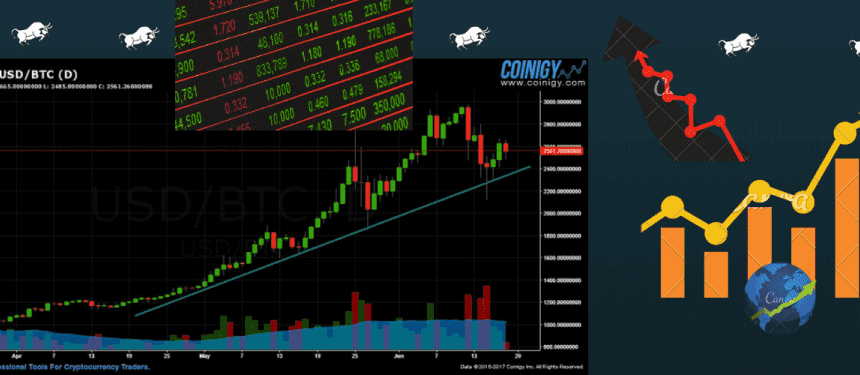From Concept to Impact: How Blockchain Implementation Transforms Industries
What is Blockchain Technology? Blockchain is a decentralized technology that enables secure and transparent peer-to-peer transactions over a distributed network. At its core, blockchain is a digital ledger where data is stored in blocks that are linked together in a chronological chain using cryptographic techniques. Key components include: Blockchain works through a step-by-step process: transactions are broadcast to a network of nodes, validated by consensus mechanisms (proof of work, stake, etc.), and grouped into blocks. Each block is then added to the chain, forming an immutable record. Types of blockchains include: Blockchain’s impact lies in its ability to enhance trust, security, and efficiency across various sectors by decentralizing processes traditionally reliant on intermediaries. Applications of Blockchain Blockchain implementation can happen in various domains across industries. Here are some key domains where blockchain technology is being actively implemented or explored: Moreover, blockchain is exploring applications in voting systems to enhance transparency and security in elections, preventing fraud and improving voter turnout. These diverse applications highlight blockchain’s potential to transform industries by providing trust, efficiency, and security in data management and transaction processes. As the technology evolves, its impact across sectors continues to expand, promising innovative solutions to longstanding challenges. Getting Started with Blockchain Implementation To get started with blockchain implementation, several prerequisites and choices must be considered: Prerequisites: Choosing the Right Blockchain Platform: Choosing the right platform depends on use case requirements (e.g., scalability, privacy), ecosystem support, and development complexity. Each platform offers unique features suited to different applications, from decentralized finance (DeFi) to supply chain management and beyond. Setting Up the Development Environment Real-World Case Studies: Successful Blockchain Implementations in India 1. State Bank of India (SBI): Blockchain for KYC and Trade Finance Overview: The State Bank of India (SBI) has leveraged blockchain technology to streamline its Know Your Customer (KYC) processes and enhance trade finance operations. Implementation: Impact: 2. Maharashtra Government: Blockchain in Land Records Management Overview: The Government of Maharashtra implemented blockchain technology for land records management to combat issues of land fraud and disputes. Implementation: Impact: 3. Yes Bank: Blockchain for Supply Chain Financing Overview: Yes Bank utilized blockchain technology to enhance supply chain financing, providing more efficient and secure financing solutions to businesses. Implementation: Impact: 4. Niti Aayog: Blockchain in Healthcare Overview: Niti Aayog, the Indian government’s policy think tank, piloted blockchain projects in the healthcare sector to enhance data security and patient care. Implementation: Impact: 5. Tea Board of India: Blockchain for Tea Traceability Overview: The Tea Board of India implemented blockchain technology to ensure the traceability and quality of tea exports. Implementation: Impact: These case studies illustrate how various sectors in India are successfully adopting blockchain technology to solve complex problems, improve efficiency, and build trust among stakeholders. As blockchain technology continues to evolve, its adoption is likely to expand across more industries, further driving innovation and growth in the country. Challenges and Considerations of Blockchain Implementation While blockchain offers a plethora of benefits, there are certain hurdles to overcome before widespread adoption becomes a reality. Here’s a closer look at some key challenges and considerations: 1. Scalability and Transaction Speed: Current blockchain solutions often struggle to handle massive amounts of transactions. Imagine a busy highway – too many cars (transactions) can lead to congestion and slowdowns. Similarly, popular blockchains can experience delays in processing transactions, making them unsuitable for high-volume applications. 2. Regulatory Uncertainty and Lack of Standardized Protocols: The regulatory landscape surrounding blockchain is still evolving. Governments are grappling with how to oversee this new technology, and a lack of clear regulations can create uncertainty for businesses considering blockchain adoption. Additionally, the absence of standardized protocols across different blockchain platforms can hinder interoperability, making it difficult for different systems to communicate and share data seamlessly. 3. Security Concerns: While blockchain boasts robust security features, it’s not entirely immune to vulnerabilities. Hackers are constantly innovating, and new attack vectors might emerge. Additionally, the security of a blockchain system also depends on the security practices of the participants involved. Weaknesses in individual nodes or poorly designed smart contracts could create security breaches. 4. Need for Industry-Wide Collaboration and Adoption: Blockchain thrives on a network effect – its value increases as more users participate. However, widespread adoption requires collaboration across different industries. Businesses need to work together to develop standards, best practices, and interoperable solutions. Without industry-wide buy-in, the benefits of blockchain might remain limited to specific applications or niche markets.These challenges don’t negate the potential of blockchain, but they highlight the need for ongoing development and collaboration. As these hurdles are addressed, blockchain is poised to revolutionize the way we conduct transactions and share data across various industries. This blog explored blockchain technology, its key components, implementation steps, and real-world applications across industries. From finance to healthcare, blockchain’s potential to revolutionize is immense. Now is the time to explore the possibilities! Techaroha offers a comprehensive suite of services including blockchain, AI integration, and Metaverse solutions to help you navigate this technological revolution.




